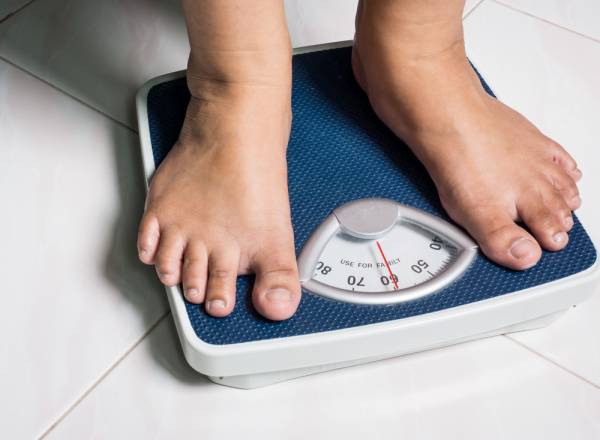A common notion persists that steady state cardio exercise is preeminent for body fat loss. Thus, a frequent plan is concocted that entails a bee-line to the running trail, treadmill, elliptical machine, or similar mechanical device, followed by slogging away at a sub-optimal steady state pace for 45-plus minutes.
A common notion persists that steady state cardio exercise is preeminent for body fat loss. Thus, a frequent plan is concocted that entails a bee-line to the running trail, treadmill, elliptical machine, or similar mechanical device, followed by slogging away at a sub-optimal steady state pace for 45-plus minutes.
That is a poor choice. Of course it’s less physically taxing, but you could have made a better decision. The majority of those who hang on to that archaic approach live by this convoluted logic:
Walking, jogging, or using an exercise machine means you are doing cardio. Doing the aforementioned cardio means you are training aerobically within the infamous “fat burning zone.” Aerobic training in the fat burning zone means you are burning more of that unsightly clump of fat on your gut, tush, or back of the upper arm. That svelte body is now within reach.
There is some truth to the above. However, it’s not quite that simple. Take a look at the present-day facts on bioenergetics, body fat storage, and how to best attack your visible, subcutaneous adipose fat storage sites (that pinchable stuff).
You’re Fat on the Inside
As a human, you have an almost unlimited supply of fat even though you don’t show it on the outside. In other words, if you’re slim and trim, even you have an ample supply of fat for fuel. A person with as little as twenty pounds of fat (a 200lb man at 10% body fat) has roughly fifteen billion fat cells.1
Those cells can contain approximately 67,000 calories, enough to provide 2,000 calories per day for a little over a month.2 In other words, you could go a month without food and probably still have a heart beat. Of course you’d need to consume water to remain hydrated during that time period. Admit it, that’s pretty amazing.
Here’s more bad news. You also have enough intra-muscular stores of fat, circulating free fatty acids in the blood, stored muscle and liver glycogen, and circulating blood glucose to fuel most daily activities, including exercise. Most activities we encounter on a daily basis – including those done by you hardworking athletes – are fueled by the aforesaid.
Stored adipose fat is akin to the U.S. oil reserves. Only under extreme conditions do you use it. When fat is moved into long-term storage, it becomes this last resort. For your body to rely solely on the stored “oil reserve” adipose fat, it becomes a major project that entails specific attention and discipline regarding proper nutrition and appropriate exercise. The ugly truth is if you can pinch it, it’s going to take a lot of discipline to shed it. But wait, it gets even worse.

Why Steady State Cardio Doesn’t Work
From a cost-benefit angle, solely performing lower-effort exercise – such as steady state cardio – can burn more fat in relative terms, but not in absolute amounts. When you are in the low-effort, steady state mode, the aforementioned more readily available energy options (stored glycogen, circulating blood glucose, intra-muscular fat) can be spared. But training at such a minimal level of effort to solely target adipose fat as energy would be like tossing a deck chair off the Titanic. It would be only a drop out of a full five-gallon bucket.
I think you get the idea. Less-taxing activities burn more relative fat, but only a small amount. Training in this manner to supposedly zero-in on stored fat is not efficient. It can be exacerbated when combined with a caloric surplus that further ads to your body’s “oil reserve fat.”
The Real Way to Burn Fat
As mentioned in my previous article, maximally burning stored body fat through exercise is about two issues: high-effort, immediate energy depleting exercise and muscle-preserving resistance training. Here is the rationale.
You now know that working with greater intensity and using a lot of muscle can deplete your immediate energy stores. Depleting blood glucose, stored glycogen, intramuscular fat, and free fatty acids through high-intensity work means the body must then obtain energy from other sources. This is where you force it to go after the adipose fat in two ways.
Post-workout, when your body is emptied of the immediate energy sources, you require stored fat to assist in the recovery process. Provided your post-workout nutrition is addressed properly, it’s like digging a hole and then refilling it. Your workout session is digging the hole. The more demanding it is, the deeper the hole. Your recovery nutrition is the filler. If you slightly under-fill the hole (but still provide proper nutrients), then more recovery energy may then be pulled from stored adipose fat.
In addition, you don’t want your body to feast on metabolically active muscle tissue. This is why resistance training – usually a missing component in most fat-loss programs – is critical. Resistance training either preserves or builds muscle mass. By stimulating muscle tissue via hard resistance training your body will further be forced to tap into stored adipose fat for recovery energy. Maintaining or growing new muscle tissue – which gives you the shape you are seeking – can counter a caloric deficit and your body’s desire to catabolize muscle tissue.
Here’s the obvious message. Get your butt in the weight room and train like a madman or madwoman if you truly desire that lean physique.

And a final note on the elevating-the-heart-rate-to-the-ideal-fat-burning-zone cardio issue. Any demanding activity that significantly raises the heart rate (i.e. above 75% of maximum) for an extended period can be used as a viable fat loss exercise. An elevated heart rate means a large stress is being placed on your muscles via high-demand efforts. This could include faster running, shoveling snow, circuit training, intense stair climbing, cutting the grass with a push mower, playing an all-out game of one-on-one hoops or soccer, boxing or sparring for an extended period, dumbbell burpees for a butt-load of repetitions, tossing and stacking green hay bales (I’m from Iowa, look it up), or any activity that is demanding and exhausting if performed for a relatively lengthy time.
To zero-in on your visible stores of fat, up your work effort, pay attention to your diet, and understand that if you spent years as a calorie hoarder, it’s going to take some discipline to dial it back.
References:
1. Jensen, MD., “What’s New in Adipose Tissue.” Mayo Clinic. Accessed May 6, 2014.
2. Fruhbeck, GJ., et al., “The Adipocyte: A Model for Integration of Endocrine and Metabolic Signaling in Energy Metabolism Regulation.” American Journal of Physiology – Endocrinology and Metabolism 280 (2001): 827:847.
3. Albright, A. L. and Stern, J. S., “Adipose Tissue.” Encyclopedia of Sports Medicine and Science. Accessed May 6, 2014.
4. Coyle, EF., “Fat Metabolism during Exercise.” Sport Science Exchange. Accessed May 6, 2014.
Photos 1 & 2 courtesy of Shutterstock.
Photo 3 courtesy of CrossFit Impulse.






